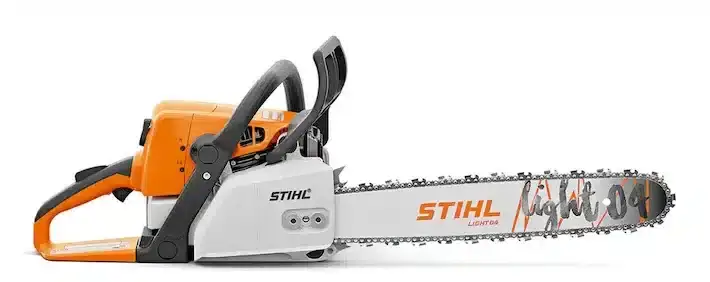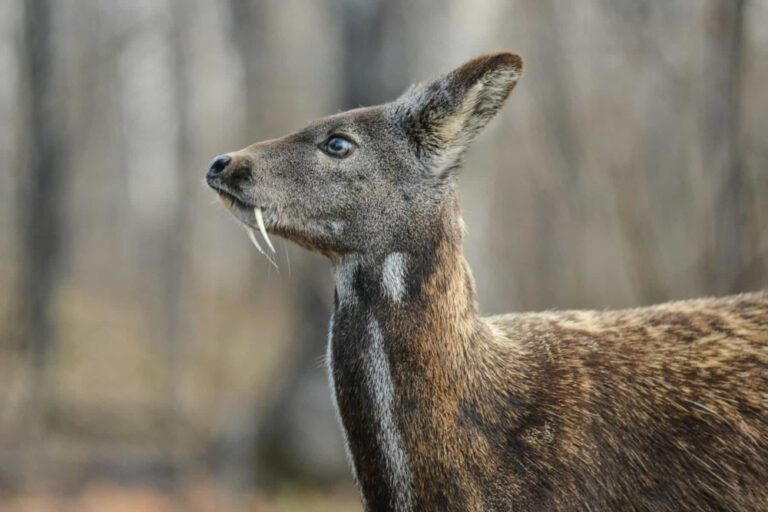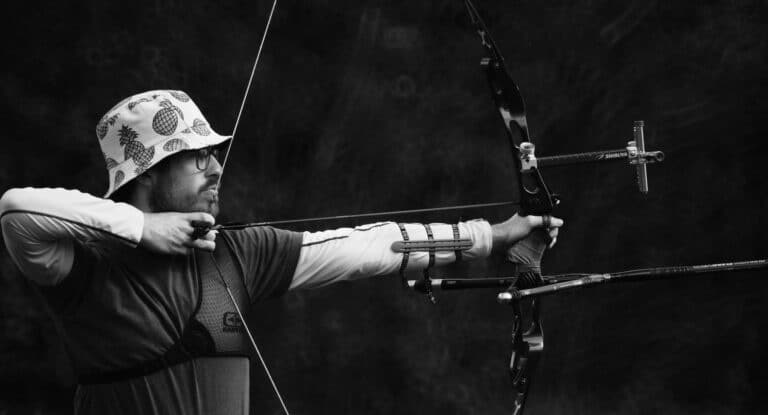Imagine stepping into the crisp Michigan woods, your breath visible in the cool autumn air, as you embark on a deer hunt that’s been months in the making. But wait – are you up to date on the latest regulations? Let’s review the Michigan Deer Hunting 2024 season.
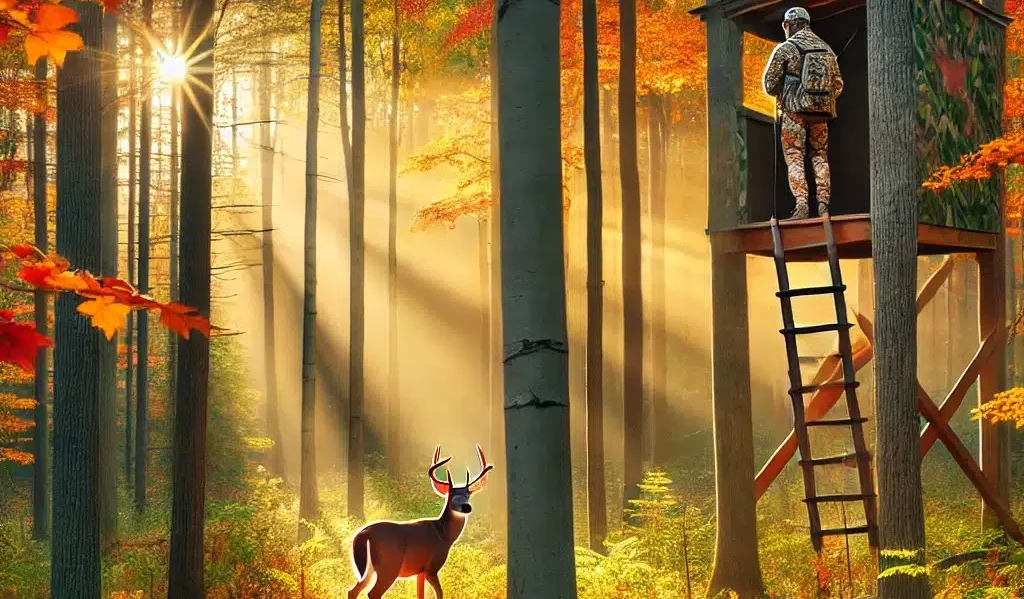
Hey there, fellow Michigan deer hunters! It’s that time of year again when we dust off our gear and dream about the perfect buck. But hold on a second – before you head out to your favorite spot, let’s talk about what’s new for 2024.
The Michigan Department of Natural Resources (DNR) has shaken things up a bit, and trust me, you don’t want to be caught off guard. Whether you’re a seasoned pro or a newbie to the hunt, this guide will walk you through everything you need about licenses, seasons, and the latest rule changes.
So grab a cup of coffee, settle in, and ensure you’re all set for a safe, legal, and exciting deer hunting season in the Great Lakes State!
Michigan Deer Hunting License
Getting the right license is step one in your hunting adventure. But don’t worry—it’s not as complicated as it sounds!
The universal antlerless deer license is particularly beneficial for both residents and nonresidents, allowing them to hunt antlerless deer across various deer management units (DMUs) in the Upper Peninsula.
Types of Licenses
Base License: This is your starting point. Think of it as your ticket to the hunting world.
Deer License: This is in addition to your base license. It allows you to take one antlered deer.
Discounted Antlerless License: This license is priced at $5 and is available for the extended late antlerless season, offering hunters a cost-effective option.
How to Get Your License (Deer Hunting Access Permit)
Online: Visit the Michigan DNR website. It’s quick and easy—you can do it in your pajamas!
In-Person: Visit a local DNR office or an authorized retailer. Stores like Walmart or sporting goods shops often sell licenses.
By Phone: Call the DNR if you’re old school or just like a good chat.
Remember, you’ll need proof of hunter safety certification if you were born after January 1, 1960. Don’t have it? No sweat! You can take an online course or find an in-person class near you.
Costs and Fees
Base License: $11 for residents, $151 for non-residents
Deer License: $20 for residents, $170 for non-residents
Antlerless Deer License: $20 for both residents and non-residents
Pro Tip: Consider the combo deer license if you plan to hunt a lot. It’s a bit pricier upfront, but it could save you money in the long run.
Michigan Deer Hunting Season
Alright, hunters, let’s talk dates! Michigan’s deer hunting season is like a menu – there’s something for everyone. Whether you’re a bow hunter or prefer the classic firearm approach, here’s when you can hit the woods:
The scheduled deer hunting regulations approved by the Michigan Natural Resources Commission aim to improve the hunting experience and incorporate feedback from the community.
Remember to check specific regulations for different deer management units (DMUs) to ensure compliance with licensing requirements, kill tags, and restrictions for antlerless hunting, especially in the Upper Peninsula.
Archery Season
October 1 – November 14
December 1 – January 1
Firearm Season
November 15 – 30
Muzzleloading Deer Season
December 6 – 15 (in some areas)
But hold up! These dates can vary depending on where you’re hunting. Michigan is split into different zones, each with its own rules.
Upper Peninsula: Things kicked off earlier here. The firearm season starts November 15, but the archery season begins October 1.
Northern Lower Peninsula: Similar to the UP, but with some tweaks for muzzleloader season.
Southern Lower Peninsula: This is where most of the action happens. The dates are pretty much as listed above.
Pro Tip: Always double-check the dates for your specific hunting spot. The DNR website is your best friend here.
Early Antlerless Firearm Season
The Early Antlerless Firearm Season in Michigan is a special opportunity for hunters to help manage the state’s deer population. This season typically takes place in September and is open to those with a valid deer license.
During this period, hunters can harvest only antlerless deer, focusing on specific deer management units (DMUs).
In 2024, the Early Antlerless Firearm Season will run from September 21-22, available on both public and private lands in select DMUs. Hunters in this season must adhere to all applicable deer hunting regulations, including wearing hunter orange and obtaining permission from landowners before hunting on private property.
This season is a crucial tool for deer management in Michigan. It helps to reduce the number of antlerless deer, maintaining a healthy balance between the deer population and the state’s habitat. Hunters play a vital role in sustaining Michigan’s deer herds by participating in the early antlerless firearm season.
Special Seasons
Liberty Hunt: A weekend in September for youth and hunters with disabilities.
Independence Hunt: Another weekend in October for hunters with disabilities.
Early Antlerless Firearm: A few days in September, but only in certain areas. The early antlerless firearm season in Michigan’s Lower Peninsula includes public lands and runs from September 18-22.
Extended Late Antlerless Season: The extended late antlerless season is available in various counties and runs from December 18 to January 1.
Remember, these seasons aren’t just random dates pulled out of a hat. They’re carefully planned to balance hunter opportunity with deer population management. Pretty cool, right?
Changes for 2024 Michigan Deer Hunting
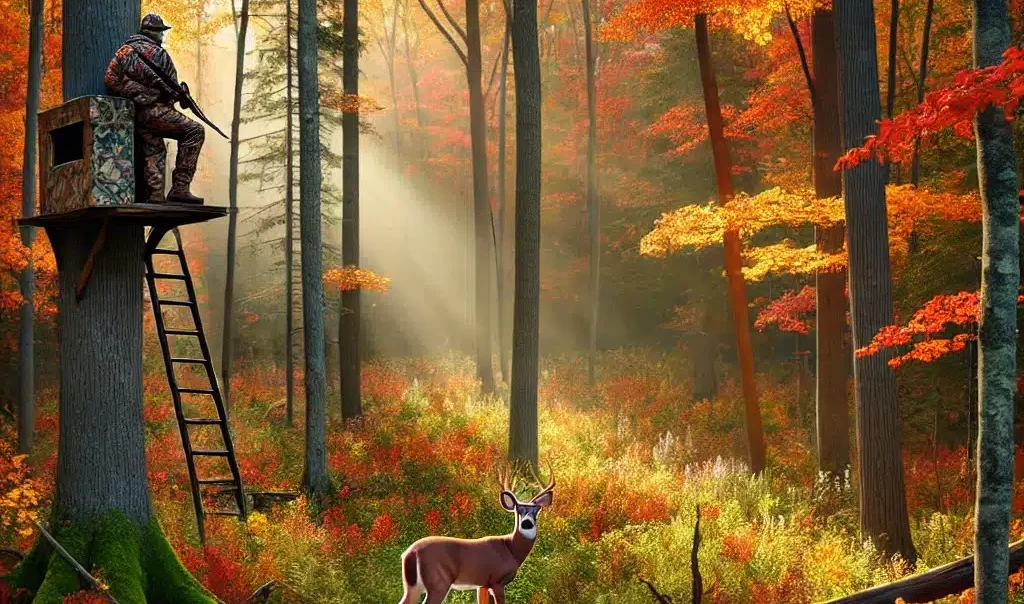
The DNR has thrown us some curveballs for 2024. But don’t sweat it – we’re breaking it down for you in plain English. Each year, the number of deer harvested impacts the regulations and strategies within various deer management units, influencing hunting permits and efforts to attract more hunters.
New Regulations
The new regulations for 2024 include changes in specific deer management units, such as DMU 122 and DMU 352. These changes involve updated hunting restrictions and antler point regulations, crucial for maintaining balanced deer populations and ensuring sustainable hunting practices.
New Regulations
1. Antler Point Restrictions (APRs)
In more counties now, you must spot at least 3 points on one side before taking a buck.
Why? It gives young bucks a chance to grow bigger. More trophy deer for us in the long run!
2. Baiting Rules
Good news! Baiting is now allowed in more areas.
But hold your horses – there’s a limit of 2 gallons at each site.
And keep it 100 yards away from your neighbor’s property line. No stealing their deer
3. Extended Archery Season
In some urban zones, you can bow hunt until January 31st.
Perfect for those who can’t get enough of the hunt!
4. Muzzleloader Changes:
You can now use any caliber rifle during the late antlerless firearm season.
Goodbye, confusing muzzleloader-only rules!
5. Chronic Wasting Disease (CWD) Zones:
Testing is mandatory in certain areas. Check the DNR map before your hunt.
It’s a pain, but it’s to keep our deer herds healthy for years.
6. Limited Firearms Deer Zone:
Hunters must comply with specific guidelines regarding legal firearms during this zone’s muzzleloading and various antlerless seasons.
Why All These Changes?
The DNR isn’t just trying to confuse us (even if it feels that way sometimes). These changes are based on:
Scientific research on deer populations
Feedback from hunters like you and me
Efforts to control diseases like CWD
Remember, hunting isn’t just about bagging a big buck. It’s about conservation, too. These rules help keep Michigan’s deer herds healthy and balanced.
Pro Tip: Take a few minutes to read through the full regulations. Yeah, it’s as exciting as watching paint dry, but it’ll save you headaches later.
Key Michigan DNR Deer Hunting Regulations

Alright, hunters, this is the nitty-gritty stuff you need to know to stay on the right side of the law. Don’t worry; we’ll keep it simple!
The extended season is crucial for deer management, providing more opportunities to manage deer populations and comply with local hunting guidelines.
Bag Limits
Antlered Deer: One per season
Antlerless Deer: Varies by county
Late Antlerless Firearm Seasons: Specific dates apply for both public and private land, including early and late antlerless firearm seasons.
Pro Tip: Just because you can take two bucks doesn’t mean you should. Think about the quality of the hunt and the health of the herd.
Antler Point Restrictions (APRs)
In many counties, bucks must have at least 3 points on one side
Some areas require 4 points on a side
Check the DNR website for a county-by-county breakdown
Baiting and Feeding Rules
Limit of 2 gallons per hunting site
Must be spread over at least 10×10 foot area
Keep it 100 yards from property lines
No use of metal containers or plastics
Hunting Hours
From 30 minutes before sunrise to 30 minutes after sunset
Check the Hunting Digest for exact times – they change daily!
Tagging and Reporting
Attach kill tag immediately after harvest
Report your harvest within 72 hours
You can report online or by phone – easy peasy!
Safety Zones
No hunting within 450 feet of an occupied building without permission
This includes houses, barns, and any building that might have people in it
Firearm Zones
Some areas are shotgun-only
Others allow rifles
Check the zone map before you head out
In the limited firearms deer zone, hunters must comply with specific guidelines regarding legal firearms during the muzzleloading and various antlerless seasons.
Remember, breaking these rules isn’t just bad form – it can land you in hot water with hefty fines or even loss of hunting privileges. Nobody wants that!
Special Considerations

Alright, folks, we’re diving into some serious stuff now. These considerations might not be as fun as talking about bagging that big buck, but they’re crucial for keeping our deer herds healthy.
Understanding regulations for different deer management units (DMUs) is essential, as they outline specific licensing requirements, kill tags, and restrictions for antlerless hunting in various regions.
Chronic Wasting Disease (CWD) Zones
What is it? CWD is a fatal neurological disease affecting deer, elk, and moose.
Where: Several counties in Michigan are now CWD management zones.
What it means for you:
Mandatory testing in some areas. You’ll need to bring your deer to a check station.
Carcass movement restrictions. Don’t transport that deer too far!
Different baiting rules. In some CWD zones, baiting is a big no-no.
Pro Tip: Before your hunt, check the DNR website for a map of CWD zones. They change year to year!
Antlerless Deer Hunting Access
Antlerless licenses are specific to public or private land. Please don’t mix them up!
Some areas have unlimited antlerless tags; others are more restricted.
You can take an antlerless deer with your regular deer license in some spots.
Why it matters: Managing the doe population is key to keeping the whole herd healthy.
Urban Deer Management
Some cities have special hunts to control urban deer populations.
Often longer seasons and more generous bag limits.
Typically, archery only keeps things safe in populated areas.
TB (Tuberculosis) Zone
It mostly affects the northeastern Lower Peninsula.
Mandatory deer check in this area.
Special baiting restrictions apply.
Remember, these special rules aren’t there to make your life difficult. They’re all about keeping our deer herds healthy for years to come. Think of it as investing in the future of Michigan hunting!
Who’s ready for some pro tips for a successful (and legal) hunt? Coming right up in our next section!
Lower Peninsula Deer Hunting
The Lower Peninsula of Michigan offers diverse deer hunting opportunities, with various habitats and deer populations to explore. This region has several deer management units (DMUs) with unique characteristics and regulations.
Deer hunting seasons in the Lower Peninsula typically include the Archery, Firearm, and Muzzleloading seasons. Hunters can harvest both antlered and antlerless deer, depending on the specific regulations for each DMU.
In addition to the regular deer hunting seasons, the Lower Peninsula also features special seasons like the Early Antlerless Firearm Season and the Late Antlerless Firearm Season. These special seasons are designed to help manage the state’s deer population and provide additional hunting opportunities.
Whether you’re a seasoned hunter or new to the sport, the Lower Peninsula offers a variety of hunting experiences to suit your preferences. Always check the specific regulations for your chosen DMU to ensure a successful and legal hunt.
Upper Peninsula Deer Hunting
The Upper Peninsula of Michigan is renowned for its rugged terrain and abundant deer population, making it a prime destination for hunters. This region boasts several deer management units (DMUs), each with regulations and unique hunting experiences.
Deer hunting seasons in the Upper Peninsula include the Archery, Firearm, and Muzzleloading seasons. Hunters can pursue both antlered and antlerless deer, following the specific rules for each DMU.
The Upper Peninsula also offers special seasons like the Early and Late Antlerless Firearm Season. These seasons are essential for managing the deer population and providing hunters additional opportunities.
With its challenging landscapes and plentiful deer, the Upper Peninsula is a must-visit for any serious deer hunter. Be sure to familiarize yourself with the regulations for your chosen DMU to ensure a safe and successful hunt.
Safety and Equipment

Essential Gear for a Safe Hunt
When it comes to deer hunting in Michigan, having the right gear is crucial for a safe and successful hunt. Here are some essential items to include in your hunting kit:
A Valid Deer Hunting License and Permits: Ensure you have your deer hunting license and any required permits. This is your ticket to a legal hunt.
Rifle or Bow: Ensure your firearm or bow meets Michigan’s deer hunting regulations. Check your equipment before heading out.
Ammunition or Arrows: Use ammunition or arrows suitable for deer hunting. Quality gear can make all the difference.
Tree Stand or Blind: For elevated hunting, a tree stand or blind is essential. It provides a better vantage point and keeps you hidden.
Camouflage Clothing: Wearing the right camo gear helps you blend in with your surroundings and stay undetected by deer.
First Aid Kit and Emergency Whistle: Safety First! Always carry a first aid kit and an emergency whistle in case of accidents.
Flashlight or Headlamp: Navigating in low light is easier with a reliable flashlight or headlamp. Don’t get caught in the dark.
Compass and Map: Stay oriented with a compass and map. These tools are invaluable, even in familiar areas.
Cell Phone or Two-Way Radio: Communication is key. Keep a cell phone or two-way radio handy for emergencies.
Knife or Multi-Tool: A good knife or multi-tool is essential for field dressing and other tasks.
Firearms and Archery Equipment
Michigan deer hunters have a variety of firearms and archery equipment during the hunting seasons. The most common firearms include rifles, shotguns, and muzzleloaders, each with specific regulations.
Archery equipment, such as bows and crossbows, is also highly popular among Michigan hunters. The Archery Season is one of the most favored times for hunting, allowing hunters to enjoy the sport with their preferred archery gear.
All hunters must comply with Michigan’s firearms and archery regulations regardless of the equipment used. This includes wearing hunter orange during firearm seasons and obtaining permission from landowners before hunting on private property. Ensuring your equipment meets state standards is crucial for a legal and successful hunt.
Tree Stands and Ground Blinds
Tree stands and ground blinds are essential tools for many Michigan deer hunters, providing a comfortable and concealed vantage point. Tree stands are elevated platforms typically placed in trees, while ground blinds are camouflaged structures set on the ground.
In Michigan, hunters can use tree stands and ground blinds on both public and private lands, but certain regulations must be followed. For instance, these structures must be clearly marked with the hunter’s name and address and removed at the end of the hunting season.
Additionally, hunters using tree stands and ground blinds must adhere to all deer hunting regulations, including wearing hunter orange and obtaining landowner permission before hunting on private property. These tools can significantly enhance your hunting experience, but using them responsibly and legally is essential.
Safety Tips and Best Practices
In addition to having the right gear, it’s also important to follow safe hunting practices to minimize the risk of accidents and ensure a successful hunt. Here are some safety tips and best practices to keep in mind:
Wear Hunter Orange: Always wear Hunter Orange clothing and gear to increase visibility. It’s not just the law; it’s common sense.
Identify Your Target: Make sure to identify your target before shooting. Never shoot at a sound or movement.
Use Tree Stands Safely: If you’re using a tree stand or blind, always wear a harness. Safety first!
Handle Firearms Carefully: Keep your firearm or bow pointed in a safe direction, and never leave it unattended.
Be Aware of Your Surroundings: Watch for other hunters, hikers, and wildlife. Stay alert to avoid accidents.
Follow DNR Regulations: Adhere to all Michigan DNR regulations and guidelines for deer hunting. They’re there for a reason.
Respect Private Property: Always obtain permission before hunting on private land. Respect property lines.
Prepare for Emergencies: Be prepared for emergencies and know what to do in case of an accident. A little preparation goes a long way.
Public and Private Lands
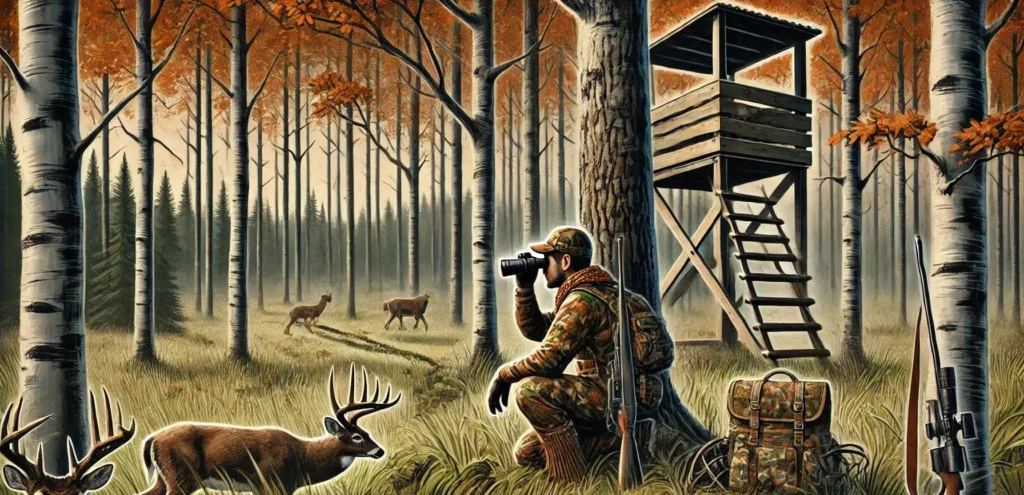
Hunting on Public Lands
Michigan offers a wide range of public lands for deer hunting, including state forests, wildlife management areas, and national forests. Here are some tips for hunting on public lands:
Research Regulations: Each public land area has specific regulations and guidelines. Make sure to research them before your hunt.
Obtain Required Permits: Before heading out, ensure you have any required permits or licenses. This will keep your hunt legal.
Respect Other Users: Public lands are shared spaces. Respect other users, including hikers, campers, and fellow hunters.
Follow DNR Guidelines: Adhere to all Michigan DNR regulations and guidelines for deer hunting on public lands.
Be Aware of Closed Areas: Some areas may be closed to hunting or have specific restrictions. Stay informed to avoid fines.
Use Navigation Tools: A map and compass are essential for navigating public lands. Stay oriented to avoid getting lost.
Prepare for Emergencies: Always be prepared for emergencies and know what to do in case of an accident.
Some popular public lands for deer hunting in Michigan include:
State Forests: Pere Marquette State Forest and Au Sable State Forest are great options.
Wildlife Management Areas: Check out the Gratiot-Saginaw State and Maple River State Game Area.
National Forests: The Huron-Manistee National Forests and Ottawa National Forest offer excellent hunting opportunities.
Remember always to follow the regulations and guidelines for the specific public land you are hunting on and respect other land users. Happy hunting!
Tips for a Successful and Legal Hunt
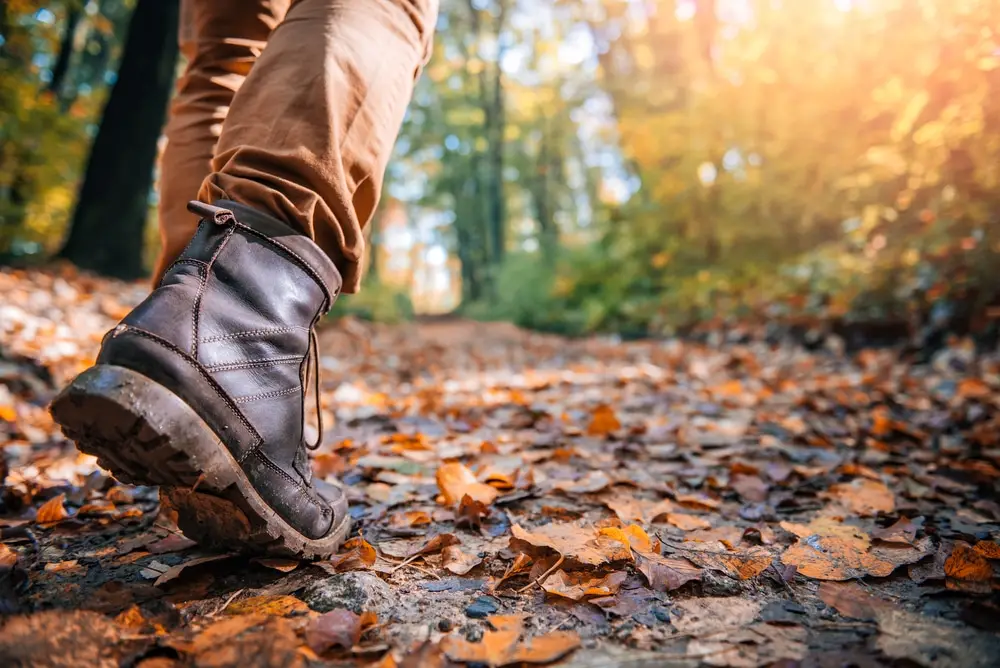
Alright, hunters, we’re in the home stretch now. Let’s talk about how to make your hunt successful and by the book. After all, doing it correctly is the only thing better than bagging a big buck!
- Know Before You Go:
- Review regulations annually. Seriously, do it every year. Things change!
- Keep the DNR website bookmarked on your phone. It’s a lifesaver in the field.
- Gear Check:
- Make sure your hunting license is signed and dated.
- Carry your hunter safety certificate if required.
- Wear that hunter orange during firearm season. It’s not just the law; it’s common sense!
- Respect Property Lines:
- Always get permission for private land.
- Don’t shoot across property lines. That buck isn’t worth a trespassing charge.
- Be a Good Neighbor:
- Share info about diseased deer sightings.
- Report any illegal hunting activity you see.
- Play it Safe:
- Always treat your firearm as if it’s loaded.
- Know your target and what’s beyond it.
- Use a safety harness in tree stands. No deer is worth a broken leg!
- Ethical Hunting:
- Take clean, ethical shots.
- Track wounded game – it’s not just ethical, it’s the law.
- Don’t waste meat. If you shoot it, plan to use it.
- Stay Updated:
- Follow Michigan DNR on social media for last-minute updates.
- Join local hunting groups. They’re goldmines of info!
- Plan Your Harvest Report:
- Know how you’ll report your kill before you head out.
- The DNR app makes it easy to report right from the field.
Remember, a successful hunt isn’t just about filling your tag. It’s about enjoying Michigan’s great outdoors, spending time with friends and family, and responsibly stewarding our natural resources.
Conclusion: Michigan Deer Hunting 2024
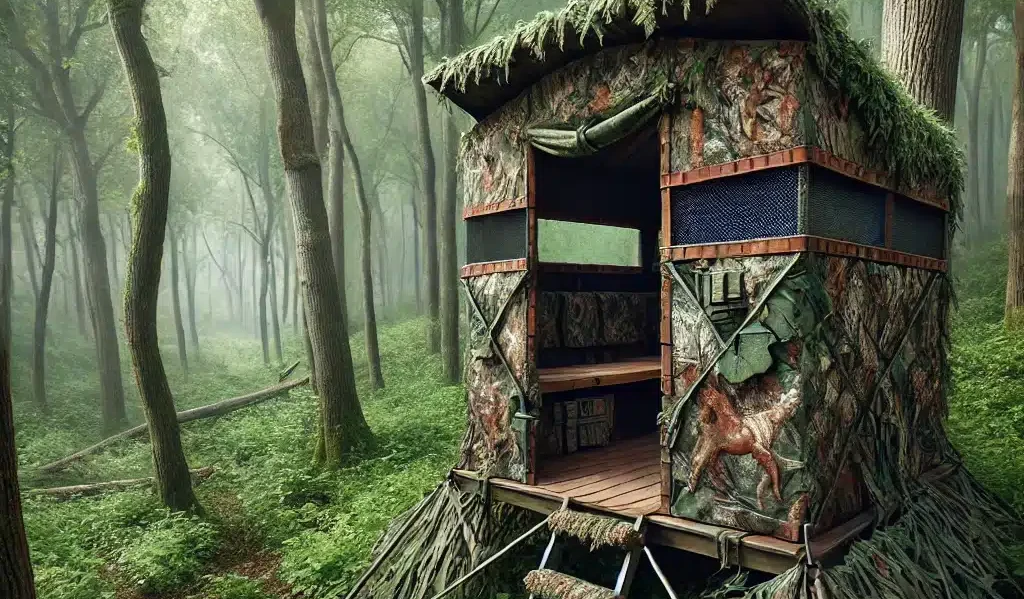
Well, fellow Michigan hunters, we’ve covered a lot of ground today. From licenses to seasons, new regulations to safety tips, you’re now armed with the knowledge you need for a great 2024 deer hunting season.
Let’s recap the key points
Always check for the latest regulations – they can change yearly.
Get your license early and know the seasons for your hunting method and area.
Pay attention to those 2024 changes, especially around antler point restrictions and baiting rules.
Stay alert in CWD zones – they’re crucial for keeping our deer herds healthy.
Above all, hunt safely and ethically.
Remember, hunting in Michigan is more than just a sport – it’s a tradition. It’s about crisp autumn mornings, the rustle of leaves underfoot, and stories shared around the campfire. It’s about conservation, respecting the land, and passing on our love for the outdoors to the next generation.
As you head out this season, take a moment to appreciate the beauty of our state. Whether in the vast forests of the UP or the rolling hills of the Lower Peninsula, you’re part of something special.
So gear up, stay safe, and may your aim be true. Here’s to a fantastic 2024 hunting season in the Great Lakes State!
Happy hunting, Michigan!


